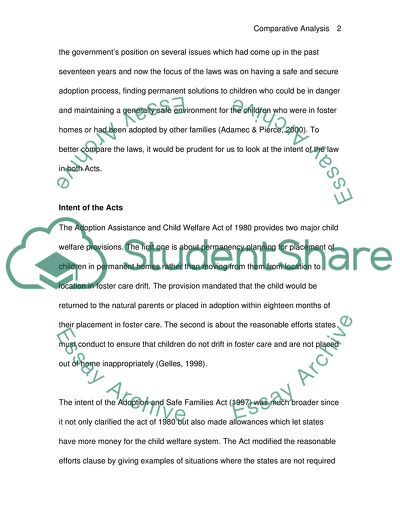Cite this document
(Comparative Policy Analysis on The Adoption Assistance and Child Case Study, n.d.)
Comparative Policy Analysis on The Adoption Assistance and Child Case Study. https://studentshare.org/social-science/1703295-comparative-policy-analysis-on-the-adoption-assistance-and-child-welfare-act-of-1980-public-law-96-272-the-adoption-and-safe-families-act-of-1997-public-la
Comparative Policy Analysis on The Adoption Assistance and Child Case Study. https://studentshare.org/social-science/1703295-comparative-policy-analysis-on-the-adoption-assistance-and-child-welfare-act-of-1980-public-law-96-272-the-adoption-and-safe-families-act-of-1997-public-la
(Comparative Policy Analysis on The Adoption Assistance and Child Case Study)
Comparative Policy Analysis on The Adoption Assistance and Child Case Study. https://studentshare.org/social-science/1703295-comparative-policy-analysis-on-the-adoption-assistance-and-child-welfare-act-of-1980-public-law-96-272-the-adoption-and-safe-families-act-of-1997-public-la.
Comparative Policy Analysis on The Adoption Assistance and Child Case Study. https://studentshare.org/social-science/1703295-comparative-policy-analysis-on-the-adoption-assistance-and-child-welfare-act-of-1980-public-law-96-272-the-adoption-and-safe-families-act-of-1997-public-la.
“Comparative Policy Analysis on The Adoption Assistance and Child Case Study”. https://studentshare.org/social-science/1703295-comparative-policy-analysis-on-the-adoption-assistance-and-child-welfare-act-of-1980-public-law-96-272-the-adoption-and-safe-families-act-of-1997-public-la.


